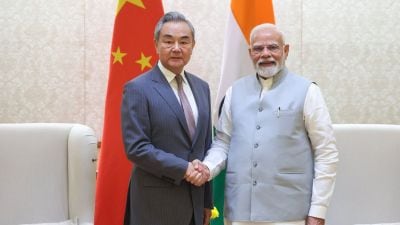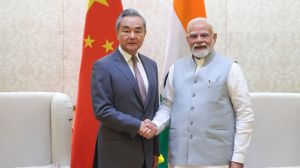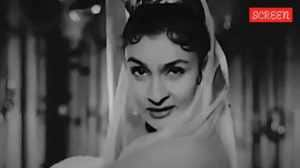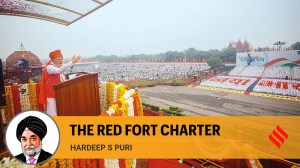Pictures from 17 states tell a thousand stories of single-screen cinema theatres
Since 2019, Photographer Hemant Chaturvedi has shot around 1,045 theatres. At present, 32 of these photographs are exhibited at the Kala Ghoda Café in South Mumbai as part of the Mumbai Gallery Weekend, where one may also find Chaturvedi explaining to enthusiasts what his project means.
 Single screen cinema theatres Jai Hind talkies in Pune (Express File Photo)
Single screen cinema theatres Jai Hind talkies in Pune (Express File Photo)Over 90,000 photographs from 17 states, including Maharashtra, taken by photographer and cinematographer Hemant Chaturvedi give a glimpse of the past, present and future of single screen cinema theatres.
Since 2019, Chaturvedi has shot around 1,045 theatres. At present, 32 of these photographs are exhibited at the Kala Ghoda Café in South Mumbai as part of the Mumbai Gallery Weekend, where one may also find Chaturvedi explaining to enthusiasts what his project means.
Some of these photos show broken seats, others show cement debris where cinema-goers perhaps once whistled at a superstar’s entry. Some show the worn-out upholstery, others show high multi-coloured walls and the main screen adorned with borders designed to make the experience grand.
Chaturvedi, who previously worked as a cinematographer for Hindi films, including Maqbool, Company, Ishaqzaade, began documenting single screen theatres from 2019 after a chance outing with his camera in his hometown of Allahabad (now Prayagraj) in Uttar Pradesh to a theatre of his childhood, now ready for demolition.
Since then, till date, the now 55-year-old Madh Island resident, travelled across 17 states in his jeep, photographing single screen cinema theatres in over 800 towns.
“I never intended the project to be so gigantic. After I had photographed over 100 cinemas, I realised there is a whole cultural era, which is being erased at an alarming rate. Each of these theatres is unique with its own history, culture, unlike the multiplex screens which are a mass replication of an idea. It very rarely has a resonance from an emotional point of view,” said Chaturvedi.
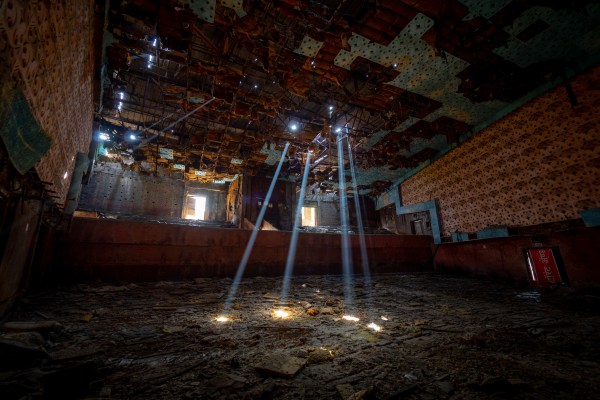 Ashok Talkies in Nashik paint a picture of neglect
Ashok Talkies in Nashik paint a picture of neglect
He adds that his research had shown that till the 1990, there were 24,000 single screen theatres across India, of which there are less than 6,000 structures surviving today, of which only 1,000-odd ones are still functioning as theatres.
“I also found that there is a whole class of people like the working class which managed to access films through these theatres as the prices were as low as Rs 5-Rs 40. They have now shifted to watching movies only on their phones as the multiplexes are not accessible to them at all due to the prices,” he said.
Chaturvedi said that he was drawn to the stories in small towns that people shared about their favourite cinema homes, along with the technology used, including the projectors and the unique architecture, which made him take on the documentation project.
He initially mapped out cinema theatres in capital cities and big towns and then began going to smaller towns. “I would find an elderly rickshaw driver, offer him double the fare and ask him to take me to the cinema theatres from his youth. Apart from Google Maps, this was the most effective way of tracing these theatres. In smaller towns, the owners of the theatres would be eager to give access. In places where it was a disputed property, I found it challenging to take photographs. I have approached banks, too, to help me access the theatres,” he said.
“Once I even posed as a buyer on advice of a bank manager to take photographs of a theatre embroiled in some property dispute,” he added.
Chaturvedi’s documentation also led him to find that many theatres opened around India’s independence or in the subsequent years would usually be named Bharat, Bharat Mata, Jai Hind, Hindmata, Liberty as part of the nationalistic fervour. Others still had a colonial hangover with names like Plaza, Roxy, Odeon. In some cases, the theatres were named after family members or a newborn child in the family.
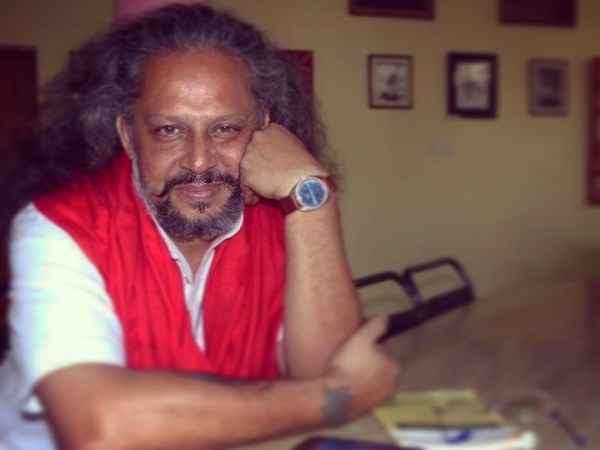 photographer Hemant Chaturvedi has shot around 1,045 theatres
photographer Hemant Chaturvedi has shot around 1,045 theatres
In Maharashtra, Chaturvedi travelled to various districts, including Kolhapur, Nashik, Nagpur and Jalna.
In Mumbai, he shot photographs of Edward, Capitol, Regal, New Empire, Mayur cinema in Borivali and Alfred cinemas.
Chaturvedi said he is likely to continue to shoot around 150 more theatres, including in Chhattisgarh, Jharkhand and Odisha.
Chaturvedi has attempted to publish these photographs in a coffee table book but has not had much success due to high costs involved and the publishing industry “being in doldrums”. The photographs will be displayed at the café till the end of March.


